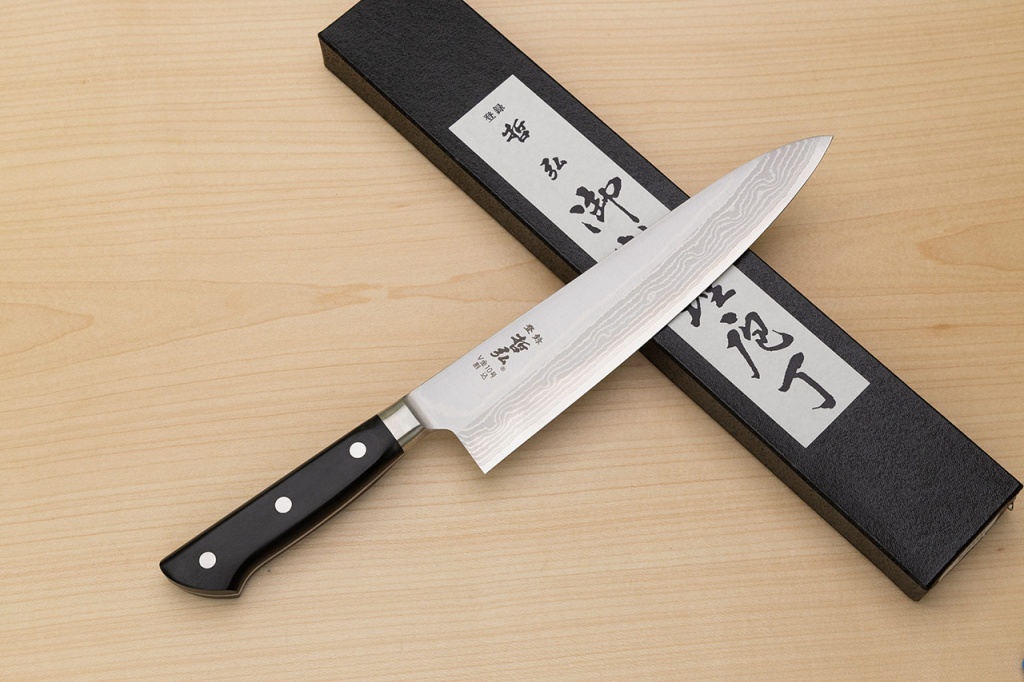Tetsuhiro VG10 Kasumi nagashi Damascus Gyuto knife 210mm (8.3") Black paper micarta
Beautiful VG10 Kasumi nagashi Damascus Gyuto knife made by Japanese Tetsuhiro Knife Company from Sanjo City in Niigata Prefecture. 210mm long blade made from beautiful multi-layer Damascus with high-purity (highly selected pure iron material used) steel VG10, as the central core. Western-style handle made from black paper micarta.
Beautiful VG10 Kasumi nagashi Damascus Gyuto knife made by Japanese Tetsuhiro Knife Company from Sanjo City in Niigata Prefecture. 210mm long blade made from beautiful multi-layer Damascus with high-purity (highly selected pure iron material used) steel VG10 (VG 10), as the central core. Western-style handle made from black paper micarta. This blade shape and steel VG10 will guarantee a very good cutting ability, sharpness, and easy maintenance at the same time. High corrosion resistance. Tetsuhiro Gyuto knife is a perfect choice for home "Everyday" cooking, and it is an excellent first knife for people who wants to start using a Japanese knife. Also highly recommended for professionals. Knife packed in premium Japanese authentic gift box with traditional patterns.
Log in to leave a review.
| Knife Type | Gyuto |
| Brand |
Tetsuhiro
|
| Knife Style | Modern Japanese Kniwes |
| Blade Bevel Grind | Double-edged |
| Total Knife Lenth (mm/inch) | 370/13.4 |
| Blade Lenth (mm/inch) | 210/8.3 |
| Blade Height at Base/Heel (mm/inch) | 47/1.85 |
| Blade Thickness above heel (mm/inch) | 2/0.075 |
| Blade Thickness above tip (mm/inch) | 1.9/0.075 |
| Blade Steel / Core steel | VG10 |
| Blade Core Hardness | 60-61HRC |
| Blade Construction / Structure | Damascus Knives |
| Blade Cladding Steel | Stainless Steel |
| Knife Handle Material | Black paper micarta |
| Handle Bolster | Yes |
| Handle style | Western |
| Total Knife Weight (g/Oz) | 170/6 |
| Hand-sharpened | Yes |
| Place of Origin | Niigata Japan |
After use, wash it with a soft sponge, wipe the knife dry and store safely. Avoid cutting the bones, frozen foods, hard fruit pits.
Recommended cutting surface: wood, rubberized boards, and high-end composites, as well as quality plastics such as polyethylene, make acceptable cutting surfaces and will help protect and extend the life of the knife's edge. AVOID using glass, metal, countertops, and other rigid, unyielding surfaces.
We think that sharpening all quality Japanese knives on whetstones produces the finest results for your blades.









